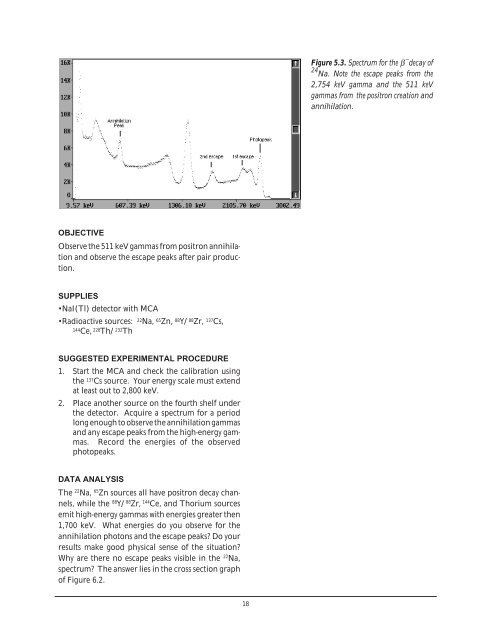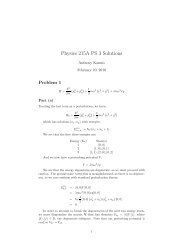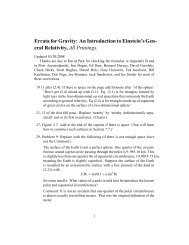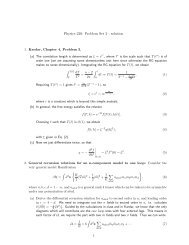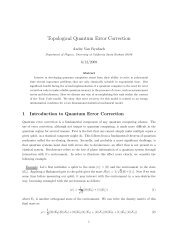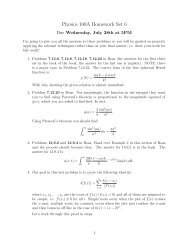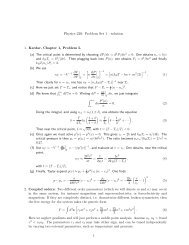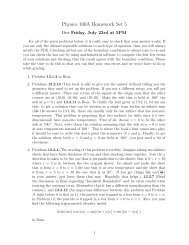Nuclear Spectroscopy
Nuclear Spectroscopy
Nuclear Spectroscopy
Create successful ePaper yourself
Turn your PDF publications into a flip-book with our unique Google optimized e-Paper software.
Figure 5.3. Spectrum for the β − decay of<br />
24 Na. Note the escape peaks from the<br />
2,754 keV gamma and the 511 keV<br />
gammas from the positron creation and<br />
annihilation.<br />
OBJECTIVE<br />
Observe the 511 keV gammas from positron annihilation<br />
and observe the escape peaks after pair production.<br />
SUPPLIES<br />
•NaI(Tl) detector with MCA<br />
•Radioactive sources: 22 Na, 65 Zn, 88 Y/ 88 Zr, 137 Cs,<br />
144<br />
Ce, 228 Th/ 232 Th<br />
SUGGESTED EXPERIMENTAL PROCEDURE<br />
1. Start the MCA and check the calibration using<br />
the 137 Cs source. Your energy scale must extend<br />
at least out to 2,800 keV.<br />
2. Place another source on the fourth shelf under<br />
the detector. Acquire a spectrum for a period<br />
long enough to observe the annihilation gammas<br />
and any escape peaks from the high-energy gammas.<br />
Record the energies of the observed<br />
photopeaks.<br />
DATA ANALYSIS<br />
The 22 Na, 65 Zn sources all have positron decay channels,<br />
while the 88 Y/ 88 Zr, 144 Ce, and Thorium sources<br />
emit high-energy gammas with energies greater then<br />
1,700 keV. What energies do you observe for the<br />
annihilation photons and the escape peaks? Do your<br />
results make good physical sense of the situation?<br />
Why are there no escape peaks visible in the 22 Na,<br />
spectrum? The answer lies in the cross section graph<br />
of Figure 6.2.<br />
18


